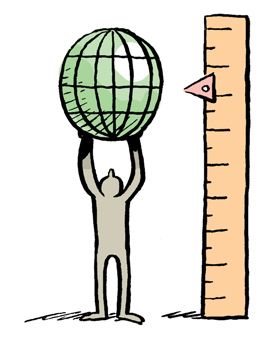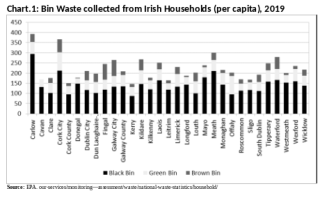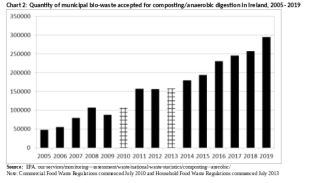Waste and recycling rates in Ireland

According to figures from the Environmental Protection Agency (EPA), in 2019, Ireland created 3.1 million tonnes of municipal waste and recycled only 37 per cent of it. Ireland also generated over 1.1 million tonnes of packaging, an increase of 11 per cent on 2018. Much of this packaging waste consisted of plastic, paper and cardboard with smaller volumes of glass, wood and metal packaging. Almost all of this is sent abroad for recycling. In 2021, exports of recyclable waste, scrap and other by-products from the EU to non-EU countries increased by 2 million tonnes in 2020 to 40.6 million tonnes.
The EPA notes that “the data indicates the increase in plastic packaging recycled is offset by an even greater increase in the amounts of packaging waste being generated and incinerated and, as a result, Ireland’s recycling rates have shown a generally declining trend since 2013.”1
Waste Action Plan
The Waste Action Plan for a Circular Economy2 is Ireland’s new National Waste Policy spanning 2020 to 2025. There is a stated awareness that “we need to embed climate action in all strands of public policy ...and... this Plan shifts focus away from waste disposal and looks instead to how we can preserve resources by creating a circular economy”.
The Circular Economy is defined by the European Parliament as “a model of production and consumption, which involves sharing, leasing, reusing, repairing, refurbishing and recycling existing materials and products as long as possible. In this way, the life cycle of products is extended. In practice, it implies reducing waste to a minimum. When a product reaches the end of its life, its materials are kept within the economy wherever possible. These can be productively used again and again, thereby creating further value.”3
The Waste Action Plan notes that “According to the United Nations, if food waste were a country, it would be the third largest global greenhouse gas emitter, behind only China and the United States. A transition to a circular economy offers the possibility of a sustainable alternative future and is a fundamental step towards achieving climate targets and United Nations Sustainable Development Goals (SDGs).”
The way in which we consume and then discard has to change if we are to achieve our Climate Action Goals and Sustainable Development Goals by 2030.
Environment and Sustainability
Chart 1 shows that much of our household waste is still being collected as general waste. The 2018 EPA Waste Characterisation Report4 found that one-third of general or “black bin” waste from non-household sources (restaurants, hotels, offices etc.) is suitable for composting/anaerobic digestion. To improve our recycling rates and ensure Ireland’s move to a circular economy, more biowaste from both commercial and household sources needs to be diverted to brown bins and composted.

Chart 2 shows that legislation makes a real difference in the volume of waste that gets recycled and this must be built on.

Policy Priorities
Examine cost barriers to refuse management and recycling for low income households.
Ensure that every locality has ease of access to recycling centres that cover a wide variety of substances.
1https://www.epa.ie/our-services/monitoring--assessment/waste/national-w….
2https://assets.gov.ie/86647/dcf554a4-0fb7-4d9c-9714-0b1fbe7dbc1a.pdf
3https://www.europarl.europa.eu/news/en/headlines/economy/20151201STO056…
4https://www.epa.ie/our-services/monitoring--assessment/waste/national-w…